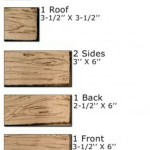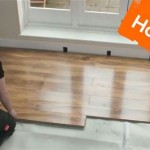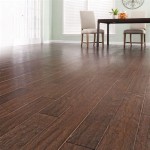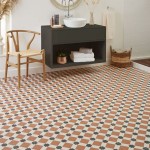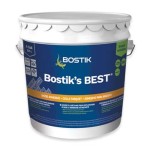LVP vs. Laminate Flooring in Singapore: A Detailed Comparison
The flooring industry in Singapore offers a diverse range of options catering to varying budgets, design aesthetics, and functional requirements. Among these, Luxury Vinyl Plank (LVP) and laminate flooring are two popular choices, often considered for their affordability, durability, and ease of installation. Choosing between LVP and laminate, however, requires careful evaluation of their distinct characteristics and suitability for specific environments and usage conditions prevalent in Singaporean homes and commercial spaces. This article provides a comprehensive comparison of LVP and laminate flooring, examining key factors like cost, durability, water resistance, appearance, maintenance, installation, and environmental impact to assist in making an informed decision.
Cost Analysis: Balancing Upfront Investment and Long-Term Value
The initial investment is a significant consideration for many homeowners and businesses in Singapore. Generally, laminate flooring tends to be slightly more budget-friendly than LVP. The cost of materials and installation for laminate can be lower, making it an attractive option for large areas or projects with limited budgets. However, it's important to consider the long-term value. LVP, while potentially more expensive upfront, often offers greater durability and water resistance, potentially reducing the need for repairs or replacements in the long run, particularly in areas prone to moisture.
The cost of installation can vary depending on the complexity of the project and the installer's rates. Preparing the subfloor is crucial for both LVP and laminate flooring. Uneven subfloors can significantly affect the installation process and increase costs. It is always advisable to obtain multiple quotes from reputable installers to get a clearer understanding of the overall expenses involved. Additionally, consider the cost of underlayment. Both LVP and laminate often require underlayment for added sound insulation, comfort, and moisture protection, which will contribute to the overall project cost.
Furthermore, the quality of the materials plays a significant role in determining the price. Higher-quality LVP and laminate flooring boast improved durability, enhanced aesthetics, and superior resistance to scratches and wear. Investing in premium materials can translate to a longer lifespan and reduced maintenance costs, ultimately providing better value for money despite the higher initial expense.
Durability and Water Resistance: Key Considerations for Singapore's Climate
Singapore's humid climate and the potential for spills and leaks make durability and water resistance paramount. LVP flooring excels in this aspect. Its construction, typically involving multiple layers including a waterproof core, makes it highly resistant to moisture. This is particularly advantageous in kitchens, bathrooms, and other areas susceptible to water damage. LVP can withstand spills, splashes, and even standing water for a considerable period without warping, swelling, or developing mold and mildew.
Laminate flooring, on the other hand, is significantly more vulnerable to water damage. While some laminate products incorporate moisture-resistant features, they are generally not waterproof. Exposure to water can cause the core layer of laminate flooring to swell and buckle, leading to irreversible damage. This makes laminate less suitable for areas with high humidity or frequent spills. However, some higher-end laminate flooring options offer improved water resistance and can perform adequately in certain environments if properly maintained.
Beyond water resistance, durability also encompasses resistance to scratches, dents, and wear. LVP generally has a thicker wear layer, providing superior protection against daily wear and tear. This makes it a more resilient choice for high-traffic areas or homes with pets. Laminate flooring also offers varying levels of durability depending on its AC (Abrasion Class) rating. Higher AC ratings indicate greater resistance to abrasion and are better suited for commercial or high-traffic residential use.
Appearance and Design Options: Replicating Natural Materials
Both LVP and laminate flooring offer a wide range of design options, mimicking the look of natural materials such as hardwood, stone, and tile. Technological advancements in printing and texturing have enabled both types of flooring to achieve remarkably realistic appearances.
LVP excels in replicating the texture and feel of natural wood. The embossed surfaces and realistic grain patterns create a convincing imitation of hardwood flooring. LVP is available in a variety of plank sizes and widths, allowing for diverse design layouts. Furthermore, the flexibility of LVP allows it to be installed in complex patterns, adding visual interest to any space.
Laminate flooring similarly offers a multitude of design options, including wood, stone, and tile imitations. The photographic layer used in laminate flooring provides a high degree of versatility in terms of color, pattern, and texture. While the texture of laminate may not always perfectly replicate the feel of natural wood, advancements in embossing technology have narrowed the gap. Laminate flooring also comes in a variety of plank and tile sizes, catering to different design preferences.
The choice between LVP and laminate in terms of appearance often comes down to personal preference and the specific design aesthetic desired. Both options provide a cost-effective way to achieve the look of more expensive natural materials without the associated maintenance requirements.
Maintenance: Ease of Cleaning and Long-Term Upkeep
Maintaining both LVP and laminate flooring is relatively straightforward. Regular sweeping or vacuuming is sufficient to remove dust and debris. Damp mopping with a mild detergent is recommended for deeper cleaning. However, excessive water should be avoided, particularly with laminate flooring, to prevent water damage.
LVP's waterproof nature makes it easier to clean and maintain compared to laminate. Spills can be wiped up without concern for water damage. The smooth surface of LVP also resists staining and is less prone to harboring bacteria, making it a hygienic choice for families with children or pets.
Laminate flooring requires more careful cleaning to avoid water damage. Use a damp mop with a minimal amount of water and ensure that any spills are cleaned up promptly. Avoid using abrasive cleaners or harsh chemicals, as these can damage the surface of the laminate. Regular maintenance and proper cleaning techniques are essential to prolong the lifespan of laminate flooring.
Both LVP and laminate flooring are relatively low-maintenance compared to natural wood or stone. However, LVP's superior water resistance provides an added layer of protection and simplifies the cleaning process.
Installation: DIY Friendliness and Professional Expertise
Both LVP and laminate flooring are designed for relatively easy installation, often featuring click-lock systems that allow for floating installations. This makes them suitable for DIY enthusiasts with basic handyman skills. However, proper preparation of the subfloor is crucial for a successful installation. The subfloor must be level, clean, and dry to ensure a stable and even surface.
LVP is generally easier to cut and install, particularly around obstacles or in irregular spaces. Its flexibility and waterproof nature also make it more forgiving during installation. Laminate flooring requires more precise cutting and is more susceptible to damage if mishandled. It is also important to leave an expansion gap around the perimeter of the room to allow for natural expansion and contraction.
While DIY installation is possible for both LVP and laminate flooring, professional installation is often recommended, particularly for larger or more complex projects. Professional installers have the expertise and tools to ensure a properly installed floor, minimizing the risk of issues such as uneven surfaces, gaps, or water damage. Engaging a professional installer can also save time and effort and provide peace of mind.
Environmental Impact: Sustainability and Responsible Sourcing
The environmental impact of flooring materials is an increasingly important consideration. LVP can be manufactured using virgin PVC, which has environmental concerns related to its production and disposal. However, some LVP products are made with recycled content or use more sustainable manufacturing processes. Look for LVP flooring certified by environmental organizations to ensure that it meets specific sustainability standards.
Laminate flooring is typically made from wood fibers, which are often sourced from sustainably managed forests. The use of wood fibers makes laminate a more environmentally friendly option compared to LVP in some cases. However, the adhesives and resins used in laminate production can also have environmental impacts. Look for laminate flooring with low VOC (Volatile Organic Compound) emissions to minimize indoor air pollution.
The overall environmental impact of LVP and laminate flooring depends on the specific product and the manufacturing processes used. Choosing flooring made with recycled content, sourced from sustainably managed resources, and certified by environmental organizations is essential for minimizing the environmental footprint.

3mm Vinyl Planks Vs 5mm Singapore Laminate Flooring

Pros Cons Of Vinyl Flooring In Singapore

Popular Vinyl Flooring Options In Singapore

Transform Your Space With The Best Vinyl Flooring Singapore And Self Adhesive

Why Vinyl Flooring Is Perfect For Singapore S Climate And Lifestyle

Pros Cons Of Vinyl Flooring In Singapore

Vinyl Or Laminate Flooring Which Is Better For Your Home Handyz Conceptz

For The Home Laminate Vinyl Flooring In Singapore

9 Best Vinyl Flooring In Singapore 2025 The Singaporean

Vinyl Or Laminate Flooring Which Is Better For Your Home Handyz Conceptz
Related Posts

